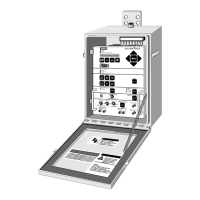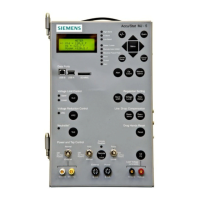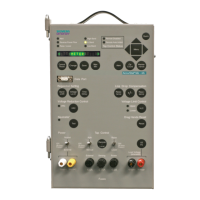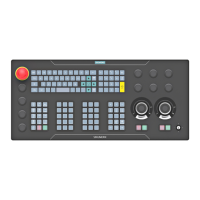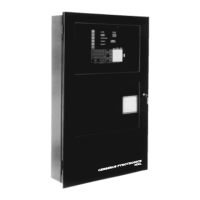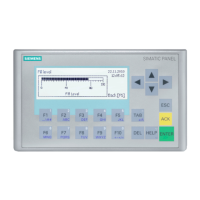8 MJ-XL Control Panel Basic Troubleshooting
Siemens Power Transmission & Distribution, Inc. 49
8 MJ-X
L
Control Panel Basic Troubleshooting
8.1 Introduction
MJ-X
L
Control Panel service is primarily accomplished at
the factory. However, certain basic procedures can be
accomplished in the field. This chapter outlines a set of
procedures whose major objectives are to:
1. Ensure that the fault is inside the MJ-X
L
(and not in
external connections or connected equipment).
2. Ensure that the fault is not due to improper jumper
arrangements or some other user-correctable condi-
tion.
3. Determine whether the fault can be locally repaired
(e.g., by replacing a fuse or the Neutralite indicator).
Troubleshooting approaches depend upon the problem.
Among other indicators, you should consider:
• Visual review of the unit.
• Alert messages (see Table 8.1 below).
8.2 Limited Testing
8.2.1 Visual Inspection
Check:
• Power and Sensing fuses
• External Source fuse (if External Source Terminals are
used to power the unit)
• Fuse connectors not mated properly
• Jumpers not in their correct positions
• Terminal Strip connectors not mated properly
• Terminal Strip connector jumpers missing or screws
not tightened properly
Note: For more detailed information, request the
MJ-X
L
Troubleshooting Guide from your Sie-
mens PT & D representative.
Table 8.1 Alert Messages
Alert Name What to Check
Low Current Check E1 and C2 wiring. Check calibration on the Current inputs.
Auto Inhibit This alert does not indicate a fault condition. It indicates that Automatic Inhibit has been activated (either via the
communications link or via the Automatic Inhibit Input terminals
Tap Track Error May indicate a temporary fault condition (failure to detect a transition on one of several input lines.) Check PDS sig-
nals J, K, U10 and U12.
Neutral Sig. Err May indicate a temporary fault condition (failure to detect a transition on one of several input lines.) This alert could
also indicate a problem with the Neutralite input signal. Check the Neutral (PDS-U12) input.
Tap Pos ???? May indicate a temporary fault condition (failure to detect a transition within the allowed time period on one of sev-
eral input lines.) Check the Neutral (PDS-U12) and Operations Counter (PDS-U10) inputs.
Low PT Thresh This alert does not necessarily indicate an MJ-X
L
fault condition. Check to see whether this alert condition goes
away when both U2 and P2 are above the PT Threshold.
Overcurrent This alert does not (normally) indicate an MJ-X
L
fault condition. Ensure that this Alert goes away when an in-range
current (0-200 mA) is applied at C2/E1.
NV RAM Reset May indicate a temporary fault condition. If condition appears repeatedly, replace the unit.
Low Battery Indicates that it is time to replace the Lithium Battery. If condition persists after a good battery is installed, check
that the battery was installed properly. If fault persists, consult the factory.
High Voltage May indicate a temporary system fault condition. If condition persists when in-range voltages (90-140 VAC) are
applied to both PDS-U2 and PDS-P2 inputs, perform calibration.
Not in Auto Indicates that Remote/Auto/Manual switch is in Manual.
R Limit Reached,
L Limit Reached
These alerts indicate that the tap position has reached or exceeded the pre-set threshold. These alerts may occur
during normal operation due to system conditions. If these alerts occur when system conditions do not warrant it,
their occurrence could indicate an MJ-X
L
failure. Verify that the MJ-X
L
can automatically raise and lower the tap
position.
Self Test Fault This alert indicates a failure of one or more MJ-X
L
self tests. Consult your Siemens representative for instructions.
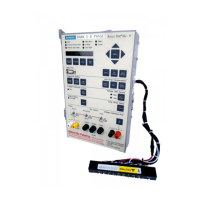
